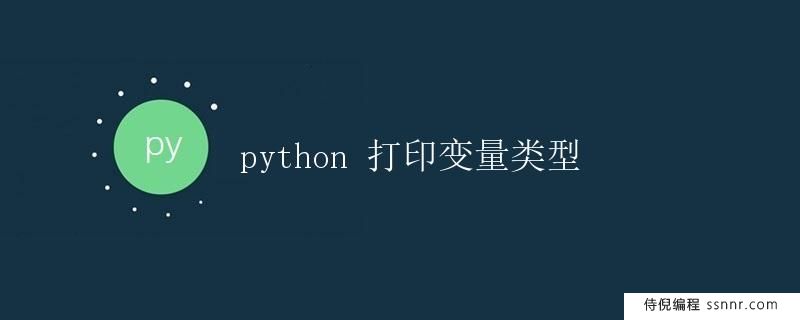Python 打印变量类型

在编写程序时,经常需要对变量的类型进行判断和打印。Python 是一种动态类型语言,变量的类型在运行时才会确定,因此了解如何打印变量类型是非常重要的。
1. 获取变量类型
在 Python 中,可以使用 type() 函数来获取一个变量的类型。下面是一个简单的示例:
x = 5 y = "Hello, World!" z = True print(type(x)) # <class 'int'> print(type(y)) # <class 'str'> print(type(z)) # <class 'bool'>
上面的代码定义了三个变量 x、y 和 z,分别赋值为整数、字符串和布尔值。然后使用 type() 函数来打印它们的类型。
2. 打印变量类型
除了使用 type() 函数外,还可以直接使用 print() 函数来打印变量的类型。这种方法更简单直观,适合快速调试和测试。
x = 3.14
y = [1, 2, 3]
z = {"name": "Alice", "age": 25}
print("Type of x:", type(x))
print("Type of y:", type(y))
print("Type of z:", type(z))
上面的代码将一个浮点数、一个列表和一个字典赋值给变量 x、y 和 z,然后分别使用 print() 函数和 type() 函数来打印它们的类型。
3. 示例代码
下面是一个更复杂的示例代码,演示了如何打印多个变量的类型,并对其中的一些变量进行类型判断:
a = 42
b = "Python"
c = [1, 2, 3]
d = (4, 5, 6)
e = {"name": "Bob", "age": 30}
f = True
variables = [a, b, c, d, e, f]
for var in variables:
print("Type of", var, "is", type(var))
if isinstance(var, int):
print(var, "is an integer.")
elif isinstance(var, str):
print(var, "is a string.")
elif isinstance(var, list):
print(var, "is a list.")
elif isinstance(var, tuple):
print(var, "is a tuple.")
elif isinstance(var, dict):
print(var, "is a dictionary.")
elif isinstance(var, bool):
print(var, "is a boolean.")
else:
print(var, "is of unknown type.")
上面的代码定义了多个变量,并使用列表 variables 存储这些变量。然后使用循环遍历列表中的每个变量,打印其类型,并根据类型进行相应的判断和打印。
4. 运行结果
运行上面的示例代码,将得到如下输出:
Type of 42 is <class 'int'>
42 is an integer.
Type of Python is <class 'str'>
Python is a string.
Type of [1, 2, 3] is <class 'list'>
[1, 2, 3] is a list.
Type of (4, 5, 6) is <class 'tuple'>
(4, 5, 6) is a tuple.
Type of {'name': 'Bob', 'age': 30} is <class 'dict'>
{'name': 'Bob', 'age': 30} is a dictionary.
Type of True is <class 'bool'>
True is a boolean.
从输出可以看出,每个变量的类型都被正确识别,并根据其类型进行了相应的打印操作。
5. 总结
通过上面的示例,我们学习了如何在 Python 中打印变量的类型。掌握这种技巧可以帮助我们更好地理解和调试程序,提高代码编写的效率和准确性。
版权声明:本页面内容旨在传播知识,为用户自行发布,若有侵权等问题请及时与本网联系,我们将第一时间处理。E-mail:284563525@qq.com




